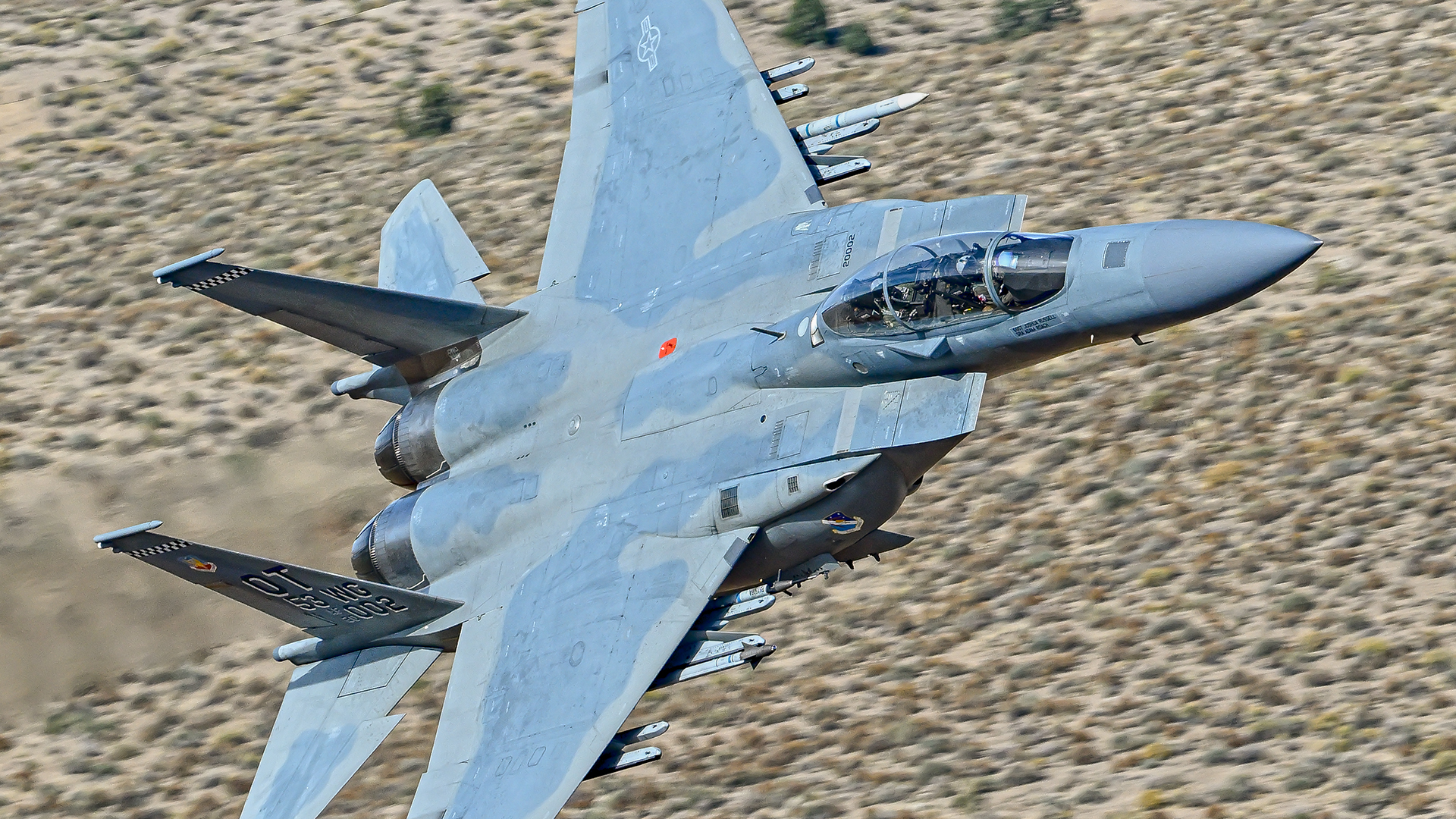The F-15 Eagle is one of the world’s most prolific fighter aircraft, having been in production for 50 years and accrued an impressive service record that includes over 100 aerial victories. Today, an all-new variant is rolling off the Boeing manufacturing line in St. Louis, Missouri, which is where we begin “Eagle Month” – a deep dive into the Advanced F-15.

“The F-15EX Eagle II that we are building for the U.S. Air Force is one of Boeing’s most important aircraft right now. The proven platform, the speed, the payload, and the range. I’m partial because I’m an F-15 guy and I sell fighters for the company, but the things we’re doing [right now] are going to set conditions moving forward for the rest of our military portfolio,” says Rob Novotny, former USAF Brig. Gen., career F-15 pilot, and now Boeing director of Fighters Business Development.
“The Advanced F-15 provides capability that a lot of the other platforms do not,” Novotny explains. “The physical size of this airplane means we’re able to expand computing power, plus we’re going to be able to bring new sensors on board, new pods, and new weapons. So as the pace of technology continues to accelerate, as the adversary continues to evolve, the F-15 will stay at or ahead of that pace for the USAF.”

“We’re going to use [the F-15] as one of our testbeds as we work towards an open mission system and its integration with the cockpit, with the aircrew, and the sensors. A lot of that groundwork has been done with the F-15EX and some of our advanced manufacturing capabilities have also been proven on this technology moving forward. So this is a critical component, as is the workforce that’s building this [jet].”
50 years of the Eagle
It’s 50 years since the first production F-15A rolled off the McDonnell Douglas manufacturing line in St. Louis, Missouri, before being delivered to the 555th Tactical Training Squadron at Luke Air Force Base, Arizona, in November 1974. The original F-15A-to-D variants of the Eagle earned a fearsome reputation in air-to-air combat – famously notching up a kill ratio of 104-to-0, with the F-15’s very first aerial victories being recorded by Israeli pilots against Syrian MiGs in 1979.
The Eagle’s prowess for air superiority truly came to fame during Operation Desert Storm in 1991, when USAF and Royal Saudi Air Force Eagle pilots employed AIM-7 Sparrows to devastating effect to decimate the Iraqi Air Force. That domination of the air-to-air mission has been proven in other major air campaigns, including Operation Allied Force in 1999.
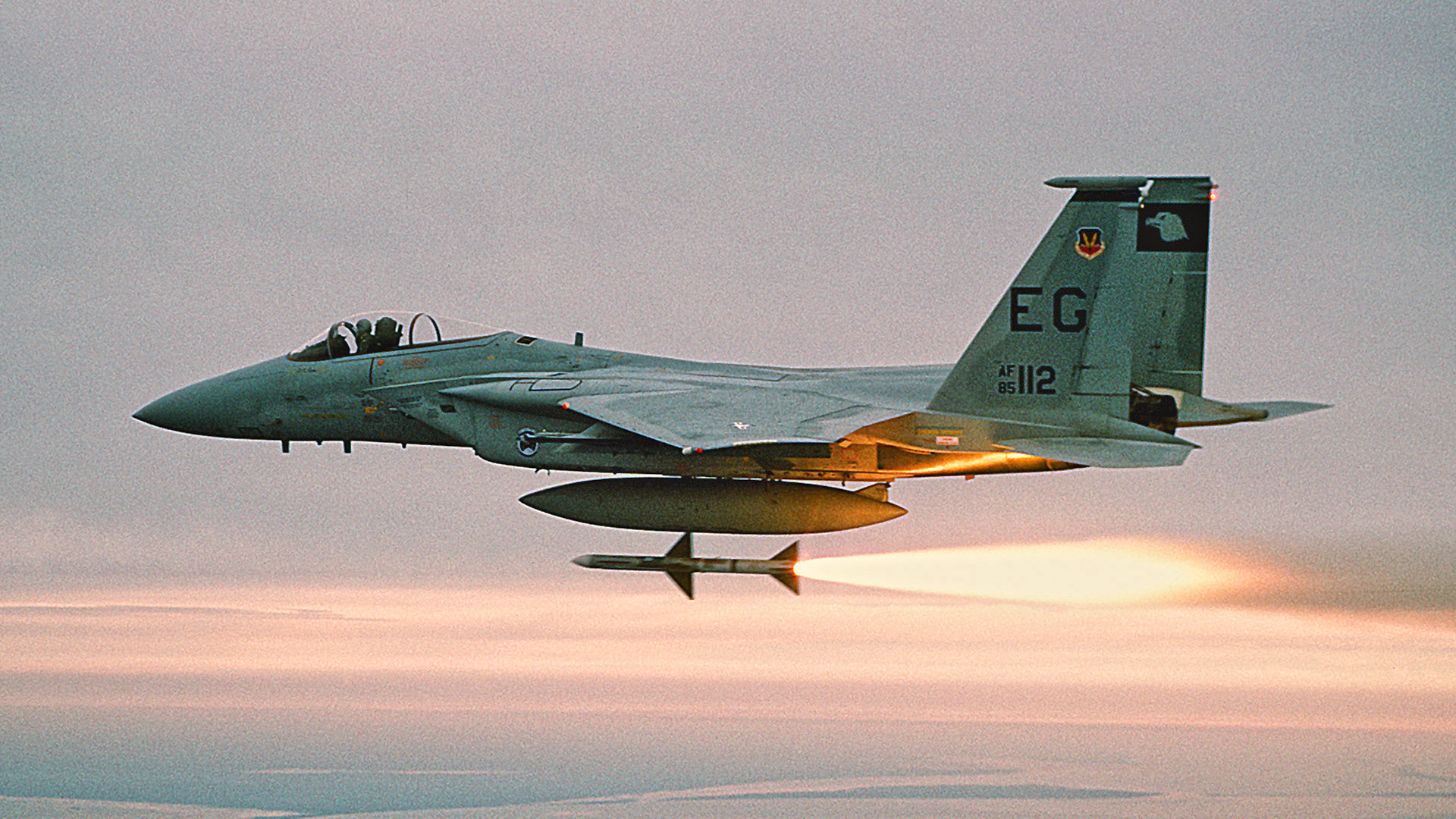
The Eagle’s air-to-air prowess was again underscored more recently on April 13, 2024, during Iran’s reprisal attack on Israel that included a barrage of ballistic and cruise missiles, as well as throngs of long-range kamikaze drones, the combined likes of which have never been seen before. Forward-deployed USAF F-15E Strike Eagles – the dual-role variant of the F-15 – from units based at RAF Lakenheath in England and Seymour Johnson Air Force Base in North Carolina played an outsized role in shooting down more than 70 of the Iranian drones. The actions once again highlighted and underlined the continuing importance of the F-15 in USAF service, and the case for the F-15EXs.
F-15A-to-Ds were procured not only by the USAF, but also by Israel, Japan (F-15J/DJ), and Saudi Arabia. Development of the air-to-air and air-to-ground-capable F-15E Strike Eagle saw the type effectively replacing the F-111 Aardvark in USAF service. It also led to bespoke versions of the Strike Eagle subsequently being built for Israel, Saudi Arabia, South Korea, and Singapore.
Boeing, which merged with McDonnell Douglas in 1997, was eyeing the potential to radically enhance the F-15 in order to generate new customer interest and upgrade versions already in service. It developed a plan for export customers to play key roles in realizing improved, new-build versions.
The semi-stealthy F-15SE Silent Eagle was unveiled in 2009, and was aimed squarely at South Korea, featuring new conformal weapons bays, and canted vertical stabilizers, among other tweaks, to help reduce the Eagle’s radar signature. Despite a flight trial with the new weapons bays, which included an AIM-120 AMRAAMs (Advanced Medium-Range Air-to-Air Missiles) firing, the Silent Eagle wasn’t selected by Korea. However, the Eagle’s progress was not impaired.
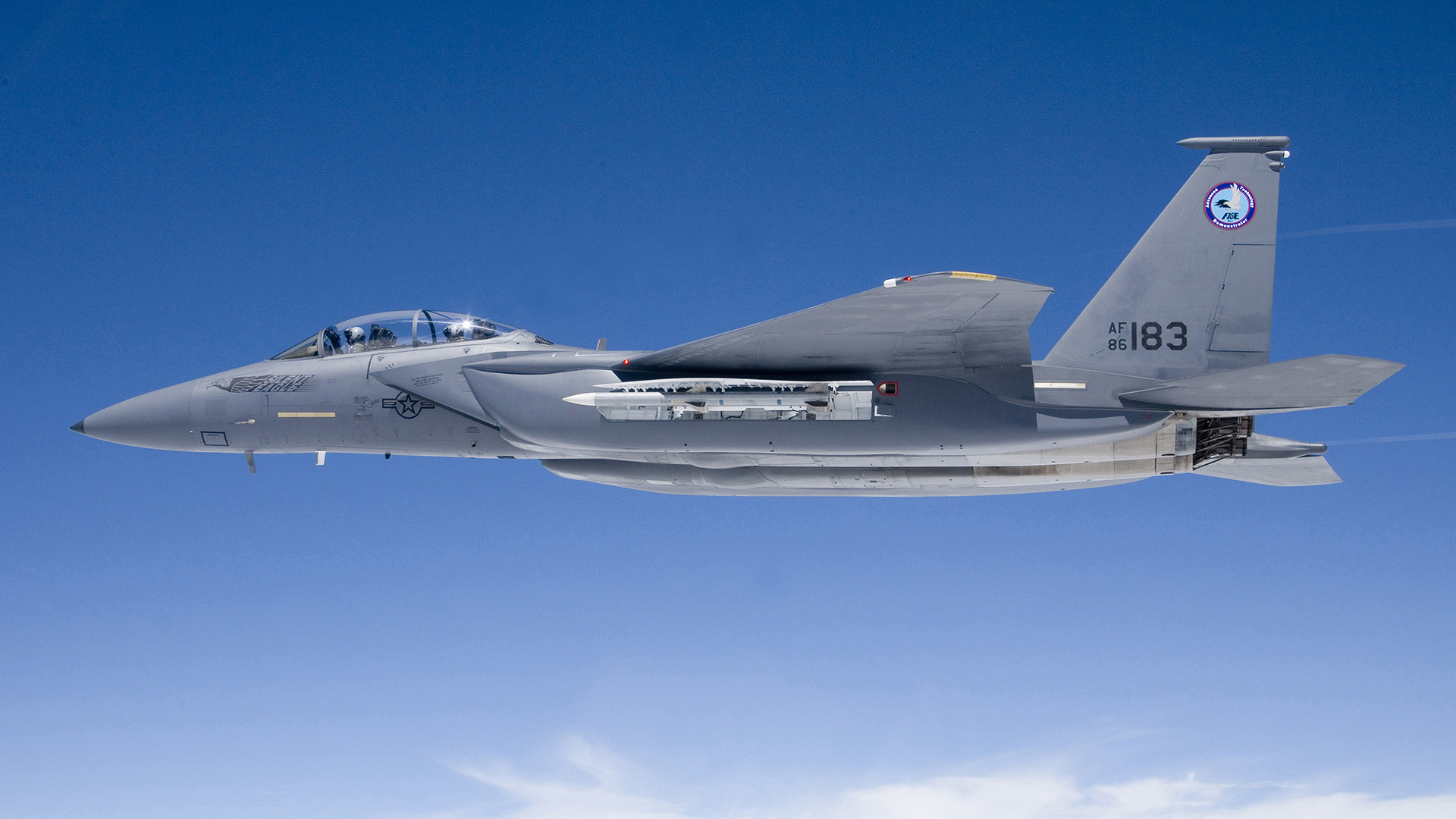
Saudi Arabia’s order for 84 F-15SA (Saudi Advanced) variants in 2011 was a major leap forward. The SA was to be the first of the Advanced F-15s, and critically it included a brand new digital fly-by-wire flight control system. This change heralded an expansive six-year flight-test program for the F-15 team at Boeing, which had to explore and recertify the entire flight envelope of the new version of the Eagle. The fly-by-wire flight controls enabled ‘carefree handling,’ as well as facilitating the opening up of two additional weapons stations, amongst other improvements.
Orders for more Advanced F-15s from Qatar followed in the F-15QA program, as did a hugely important order from the USAF, which selected the F-15EX to recapitalize some of its Air National Guard F-15C/D squadrons, instead of a costly upgrade for these aging fighters.
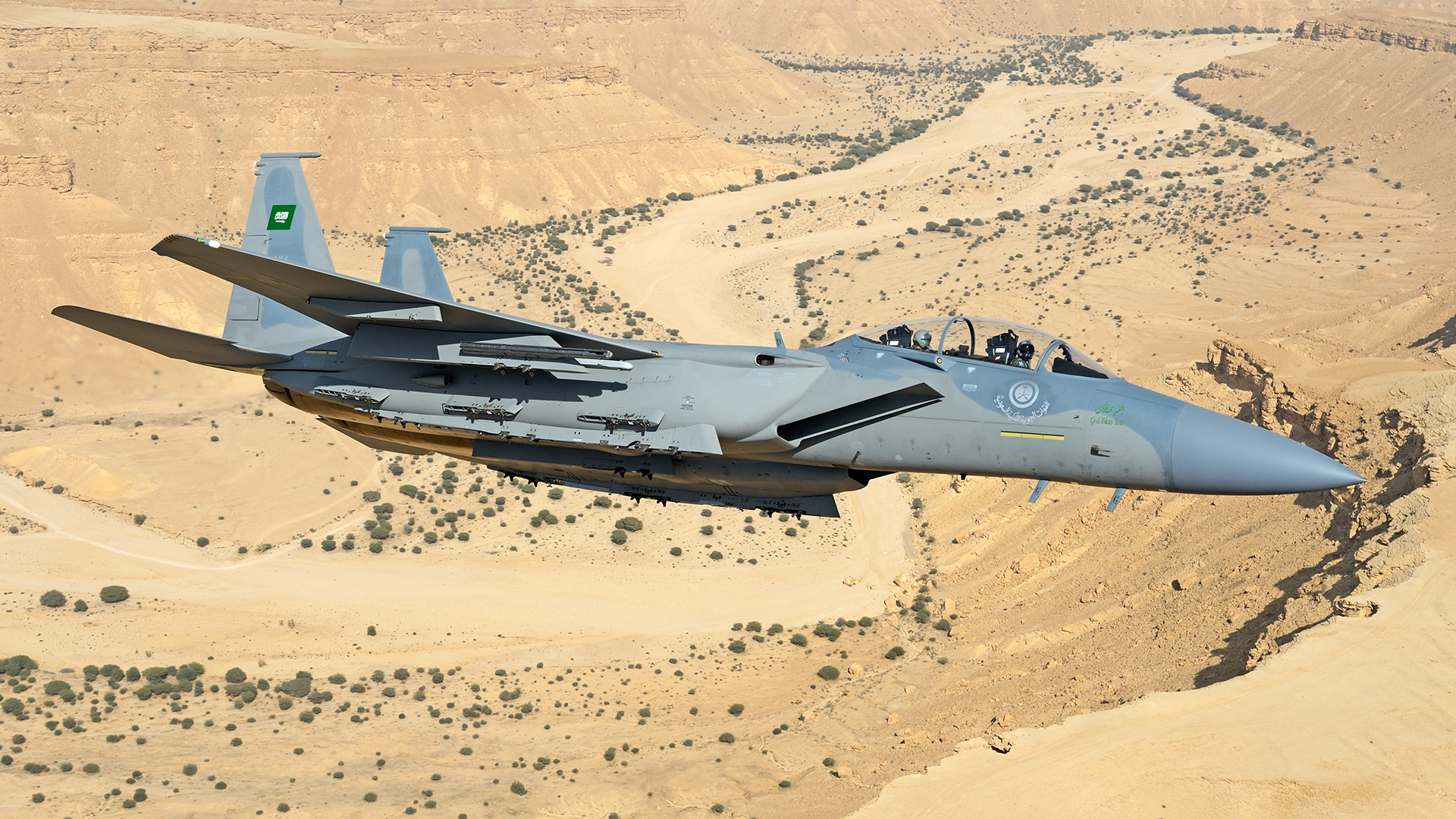
Initially referred to as the F-15X, the USAF briefly looked at a F-15CX single-seat Advanced F-15 before settling on the F-15EX, which is based on the now-standard two-seat Advanced F-15 configuration. The procurement decision enabled the USAF to take what was essentially an off-the-shelf version of the Eagle, closely based on the F-15QA, rather than a costly and time-consuming re-packaging of the Advanced F-15 into a single-seat configuration. Keeping that extra seat would prove a wise decision for myriad reasons as air combat quickly evolves in a new era of ‘great power competition.’
The F-15EX Eagle II
The USAF F-15EX configuration features a two-place large area flat-panel display in the cockpit; Digital Joint Helmet-Mounted Cueing System (DJHMCS) helmet-mounted display (HMD); low-profile head-up display; revised internal wing structure; fly-by-wire controls; Raytheon AN/APG-82 AESA radar; activation of outer wing stations one and nine facilitated by the fly-by-wire system; an advanced ADCP II mission computer; updated radio and satellite communications; the highly advanced Eagle Passive Active Warning Survivability System (EPAWSS) electronic warfare and surveillance suite; Legion Pod-mounted infrared search and track system (IRST); and General Electric F110-GE-129 engines. The list goes on.
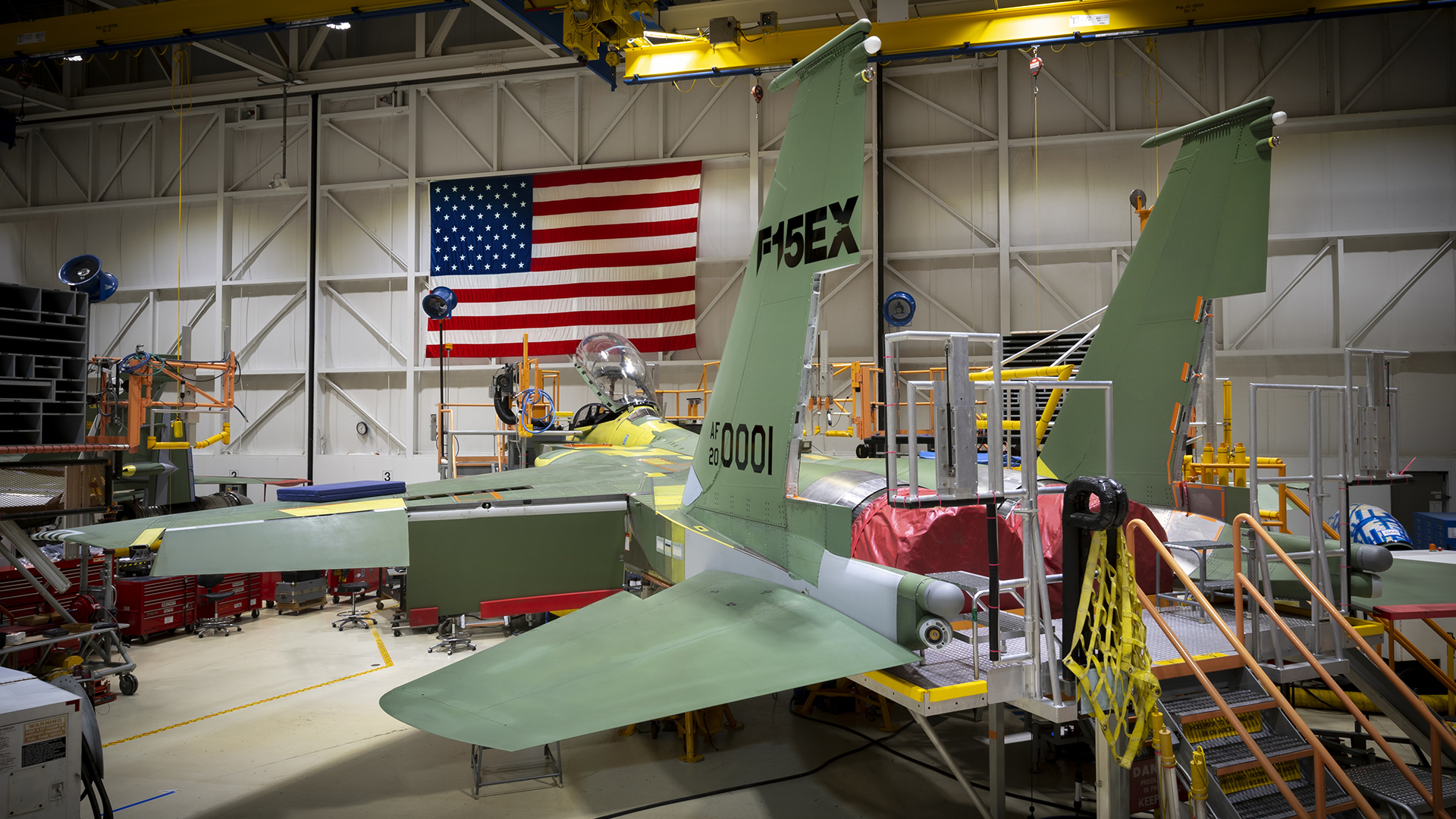
“The F-15EX behind me, first of all, is a completely new airplane,” comments Rob Novotny. “While it looks like how an F-15 has looked over the 50 years, what you don’t see are the manufacturing improvements on the inside. The design that was nearly perfected in the 1960s and ‘70s, the genetic culture that runs through this platform, the operators, the warfighters, the maintainers, we have taken all of those lessons, and poured them into the developments to what is the F-15EX behind me. This jet is built on a foundation of combat excellence, of maintainability, and of low sustainment costs.”
The Eagle’s proven ability to haul a big payload fast and far is also key to the F-15EX’s business case.
“I think one of the strongest selling points of any F-15 has always been its carriage capability. When the original variants of the F-15 were fielded they carried the largest air-to-air loadout for a long time. The Strike Eagle came along and those capabilities expanded dramatically over the decades, including precision-guided weapons. The F-15EX is no different, giving the ability to carry heavier weapons and with [added] stations to carry more weapons.”
“From an air-to-air perspective, that’s 12 weapons in the loadout. From an air-to-ground perspective almost 30,000 pounds of ordnance. That also opens the door for carrying hypersonic weapons or attritable drones – the world is your oyster when you have the options to do that. We’re not restricted by internal carriage, so we’re able to bring an entire portfolio of weapons to a country that may want to do anything from quick alert homeland defense to long-range strike into a highly-contested environment. This platform can carry all of it.”
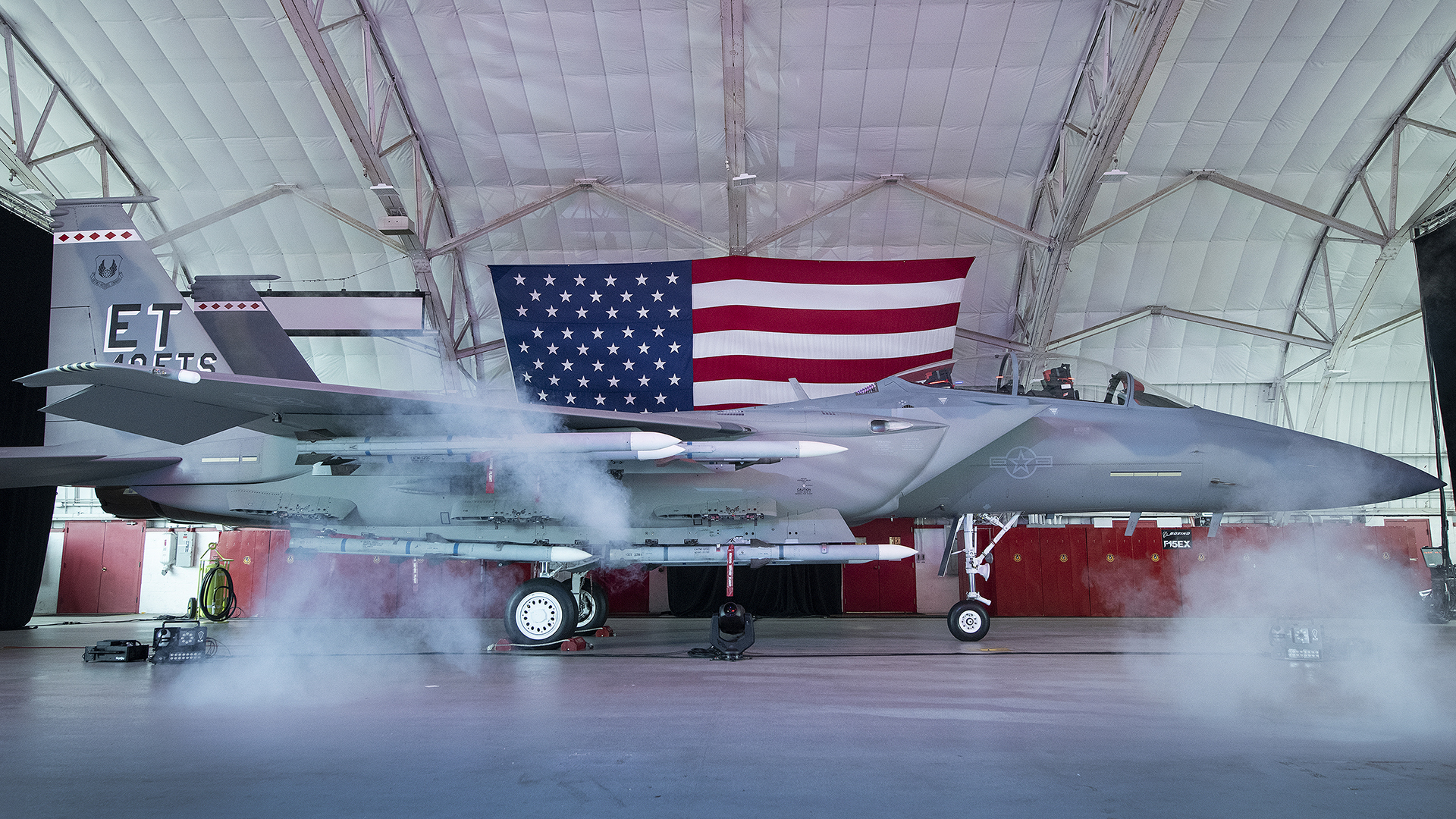
One of the Eagle’s strongest attributes is pure performance, most notably its high-speed, which has a tremendous impact on the ability to impart inertia into weapons upon firing for extremely long-range missile shots.
“Yes, the F-15EX can “supercruise” [fly over Mach 1.0+ in a sustained manner without gas-guzzling and infrared signature ballooning afterburners] but this warrants some context,” explains Novotny. “I’ve supercruised in a clean F-15C with Pratt & Whitney F100-PW-100 motors right out of the depot. I’ve done the same in an Eagle with the -220 motors. I know guys who have supercruised in F-15Es with -220 motors and with CFTs [Conformal Fuel Tanks] on. The F-15EX can also supercruise, but once we start hanging combat-relevant items on, the ability decreases.”
“I believe our really exciting move is into the electronic warfare space with our EPAWSS system. This cognitive system passed Initial Operational Test & Evaluation [IOT&E] just a few weeks ago and it is going to allow this [jet] to operate in those highly-contested environments. Using electronic warfare is an extra way of keeping pace with a threat that is evolving more rapidly. This is the way that the F-15 has gone as opposed to stealth. There’s always going to be a place for stealth and the complementary nature of stealth using LO [low observable] and non-LO platforms.”
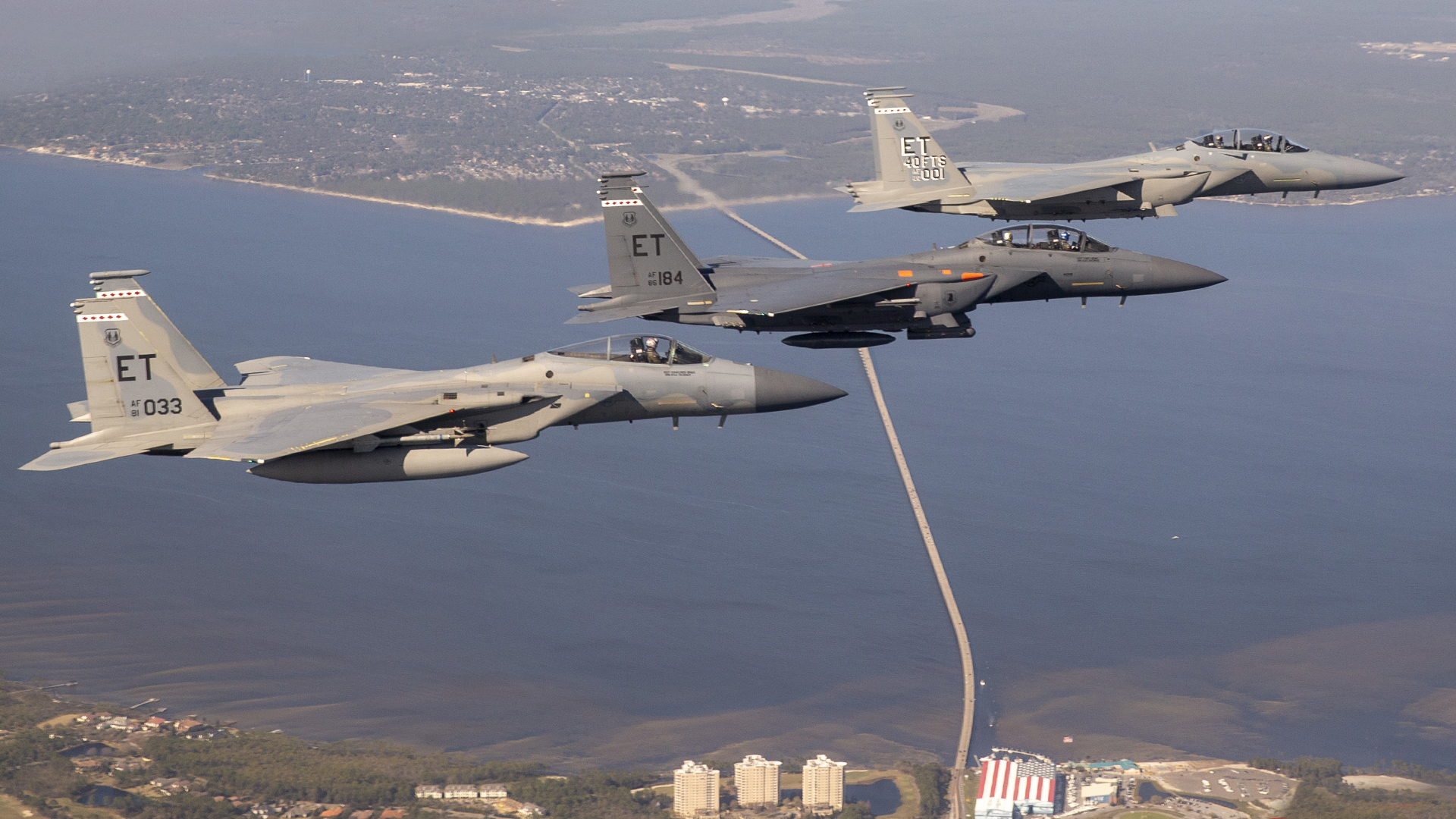
“Stealth is all about survivability and breaking the kill chain,” adds Boeing F-15 Chief Pilot Matt “Phat” Giese. “With EPAWSS we’re going to be able to generate some of those exact same effects. The enemy has made rapid advancements in counter-air technology, and rapid advancements in all kinds of infra-red technology. It’s difficult to hide this aircraft without help, and that help is coming from the electronic warfare system. This allows us to break the kill chain.”
Building the Eagle II
All F-15s have been built in the same production building in St. Louis, except the 199 F-15J/DJs manufactured under license by Mitsubishi Heavy Industries for the Japan Air Self-Defense Force. Today, the production line is building F-15QAs and F-15EXs at a rate of one-and-a-half aircraft per month. Boeing is implementing a number of projects to reduce time and costs, while improving build accuracy on the F-15 line.
“The F-15EX utilizes a modern design and manufacturing methodology called Full Size Determinant Assembly [FSDA],” explains Novotny. “This improves quality and assembly time, while reducing drilling on the aircraft and the number of tools required for assembly.” These qualitative and efficiency improvements have also come about via constructing the modern F-15 as a ‘digital airplane.’ This has included leveraging 3D digital modeling and robots to drill the thousands of holes needed in major components. Production of the forward fuselage, which was being undertaken in South Korea, returned to St. Louis with the advent of the F-15EX program. The nose barrel, forward fuselage, and wings are all now built using these techniques, with the aft fuselage and aft-center fuselage planned to follow.
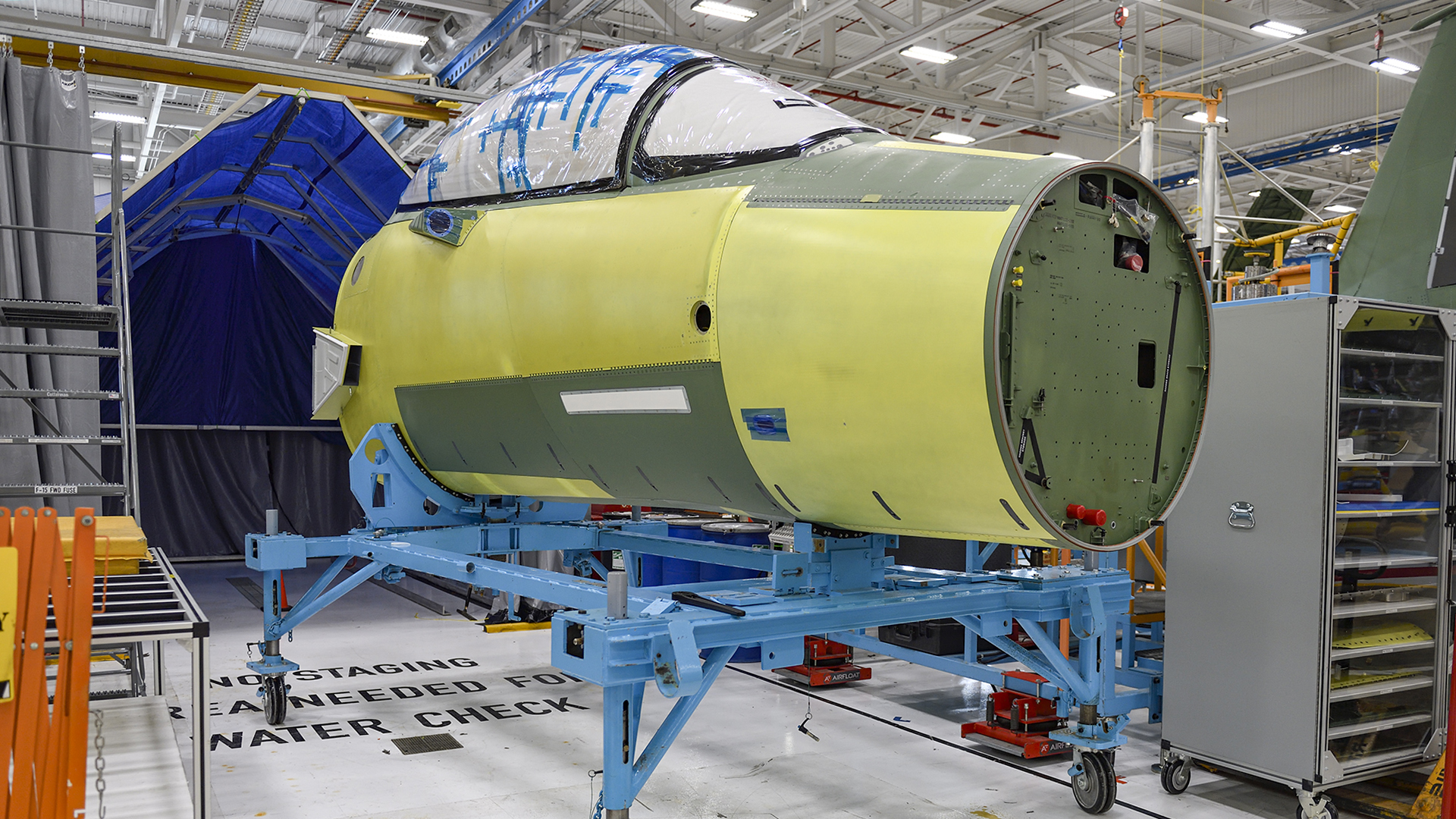
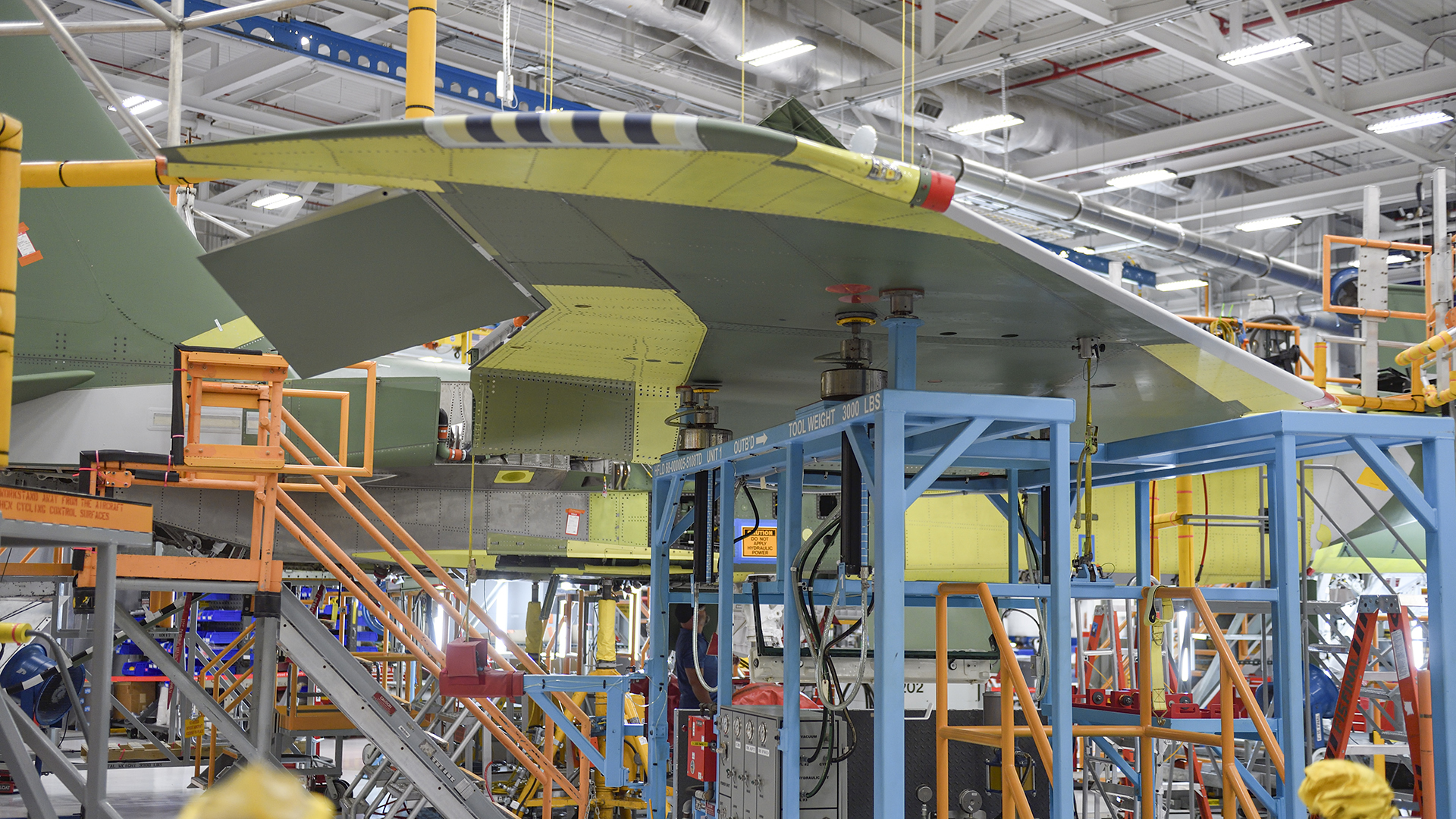
“We have updated our design in bringing the forward fuselage back here to St. Louis,” explains Jake Reichenberg, an F-15 production manager. “We are making continuous improvements and we are now down to only two hand splices [on the forward fuselage]. This is now something that’s prebuilt and it’s as simple as just clicking it together – so we’re talking about build efficiency and build quality. Other upgrades include things like fiber optics, and we continue to add more, which helps with the data coming in from the radar for example.”
“The first two EX forward fuselages were built in Korea, but aircraft EX3 for the USAF was the first one built here,” explains Anthony White, a third-generation Boeing production engineer in St. Louis. “My grandfather started here in 1966 building the F-4, and then the F-15 line started up. My role was to start up the forward fuselage line, get EX3 moving down the line, get the team set up and get the process set up – we are driving a lean, continuous improvement culture and mindset here.”
“The F-15EX has a 20,000-hour economic service life,” says Rob Novotny. “This has been enabled by running a full-scale fatigue test long enough to show structure that is good beyond 20,000 hours, and structural redesigns purposely implemented by Boeing have addressed known fatigue-critical locations.”
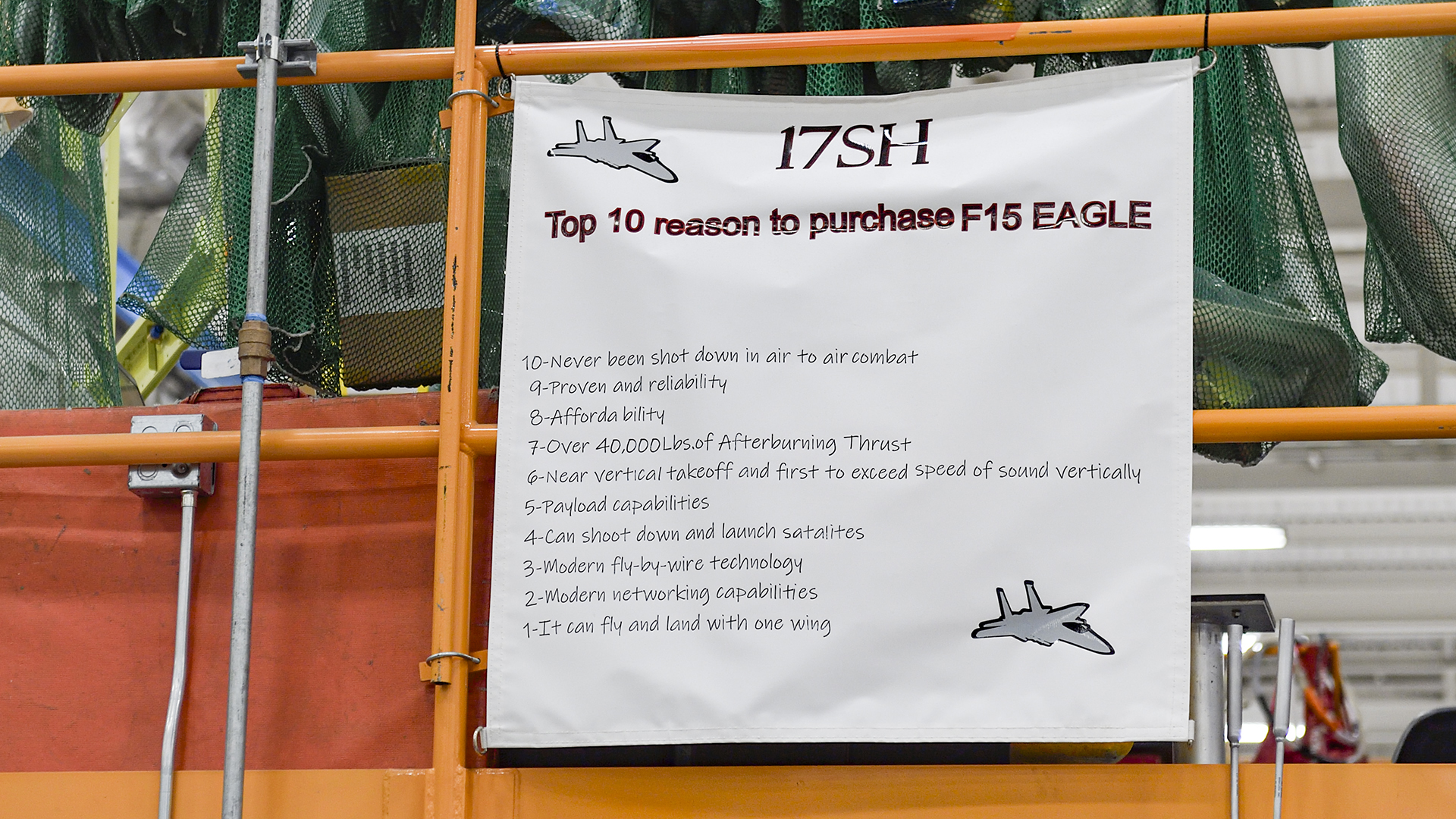
F-15EX in the USAF
The expected size of the F-15EX fleet for the USAF has fluctuated significantly over the years, but a clearer picture of the service’s plans has been steadily coming into focus.
The USAF’s initial intention was to procure 144 of the fighters. In its budget request for Fiscal Year 2023, the Air Force reduced that expected overall F-15EX purchase to 80 aircraft. The proposed budget for the 2024 Fiscal Year included a request for funds to buy 24 more F-15EXs, to bring the total planned fleet size up to 104 aircraft. The latest USAF plan reduces its total planned purchases of F-15EXs from 104 to 98 jets as part of the Fiscal Year 2025 budget.
The USAF is also looking to buy fewer F-35As than previously expected in the fiscal cycle, but the service says that there is no change to how many Joint Strike Fighters it ultimately plans to acquire in total.
The latest revision in F-15EX procurement numbers comes despite senior service officials regularly touting the F-15EX’s capabilities and expressing their desire to have more of these aircraft if possible.
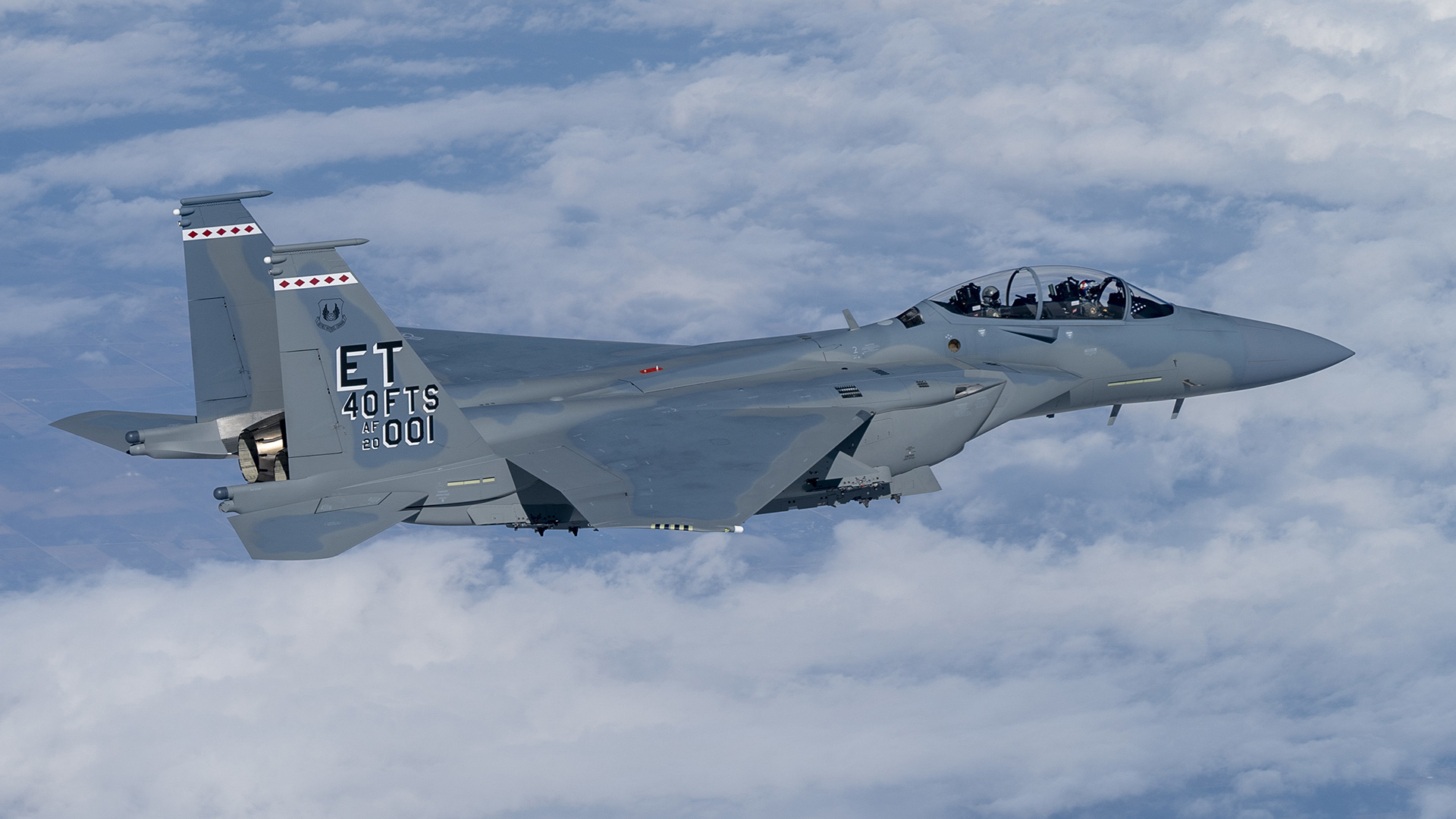
“When I talk to the customer, I believe they want more aircraft – both F-35 and F-15EX,” notes Rob Novotny, adding that his understanding is that the USAF had to cut six F-15EXs and six F-35s not because they wanted to, but because of funding restrictions brought on by the Fiscal Responsibility Act, or FRA. “The USAF’s desire to purchase the F-15EX remains strong,” he adds. “The Air Combat Command documented requirement remains at 144 aircraft, the NDAA [National Defense Authorization Act] Congressionally passed program of record is 104, while the FY25 President’s Budget request is for 98. We’ll see this fall if Congress makes any changes to that requested quantity during the annual budget process.”
Novotny added that “Boeing will deliver the last two Lot 1 jets in the coming weeks, Lot 2 is in production in St. Louis now, and Lots 3 and 4 are on contract which will deliver through the 56th fighter. Negotiations are underway now for a quantity of 24 in Lot 5, and a quantity of 18 in Lot 6. The six aircraft reduced from Lot 6 in the FY25 budget request have been added to the Air National Guard’s unfunded priority list which is under review by Congress. Boeing is working with the USAF, the Air National Guard, and our Legislators on possible options for Lot 7 and beyond.”

Novotny also cites strong demand signals from the Air National Guard for more fighters over and above the budgeted plan. One of the critical factors in the USAF coming back to Boeing for new Eagles was the ability to quickly and efficiently recapitalize Air National Guard F-15C/D units.
“Downtime for squadrons to train maintenance and aviators doesn’t have to happen with this airplane. They can pick it up and start flying right away,” he explains. “Our air forces, which are smaller than they’ve ever been before, can spend more time flying and protecting our nation. So having this platform as a ready replacement is really an important opportunity.”
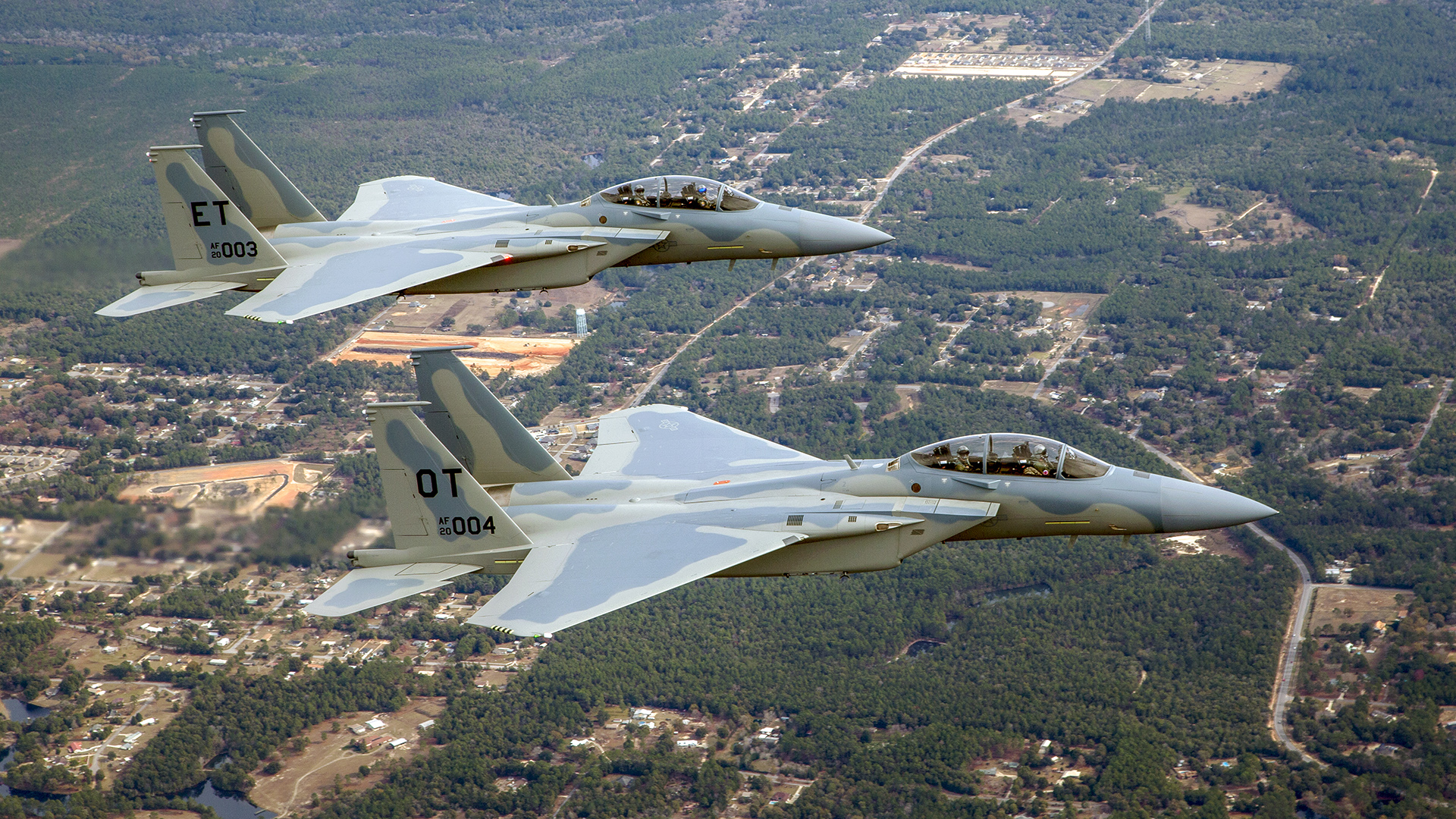
“The Air National Guard is going to fly the F-15EX as a single-seater for the most part, although you may have seen what the first EX unit – the 142nd Fighter Wing in Portland – announced recently about training up to use new weapons.” The inaugural F-15EX unit recently said it is training maintainers to load both air-to-air and air-to-ground weapons on the forthcoming F-15EXs, which could indicate possible multi-role use of the new jets. The wing previously only operated in the air-to-air role with its F-15C/Ds. A move towards multi-role use of the F-15EX could be a signal from the Air National Guard that it might use Weapons Systems Officers (WSOs) in the back seat for more complex multi-role missions, as seen with the F-15E Strike Eagle.
“I believe the Weapons School at Nellis [Air Force Base, Nevada] is building the F-15EX syllabus right now as a two-seater operation with a WSO in the back,” notes Novotny. “I think you’ll eventually see some WSOs in the Guard units. I think having one or two WSOs in a formation of four F-15EXs could be very enhancing to the mission set.”
International customers
“Our foreign partners really brought together the next level performance for the F-15. The digital engineering, digital flight controls, new cockpit — a generational leap in capability,” says Rob Novotny. All 84 F-15SAs for Saudi Arabia have now been delivered, except two jets that are retained in St. Louis for ongoing test work. A total of 33 out of an order for 48 F-15QAs have now been delivered to Qatar.
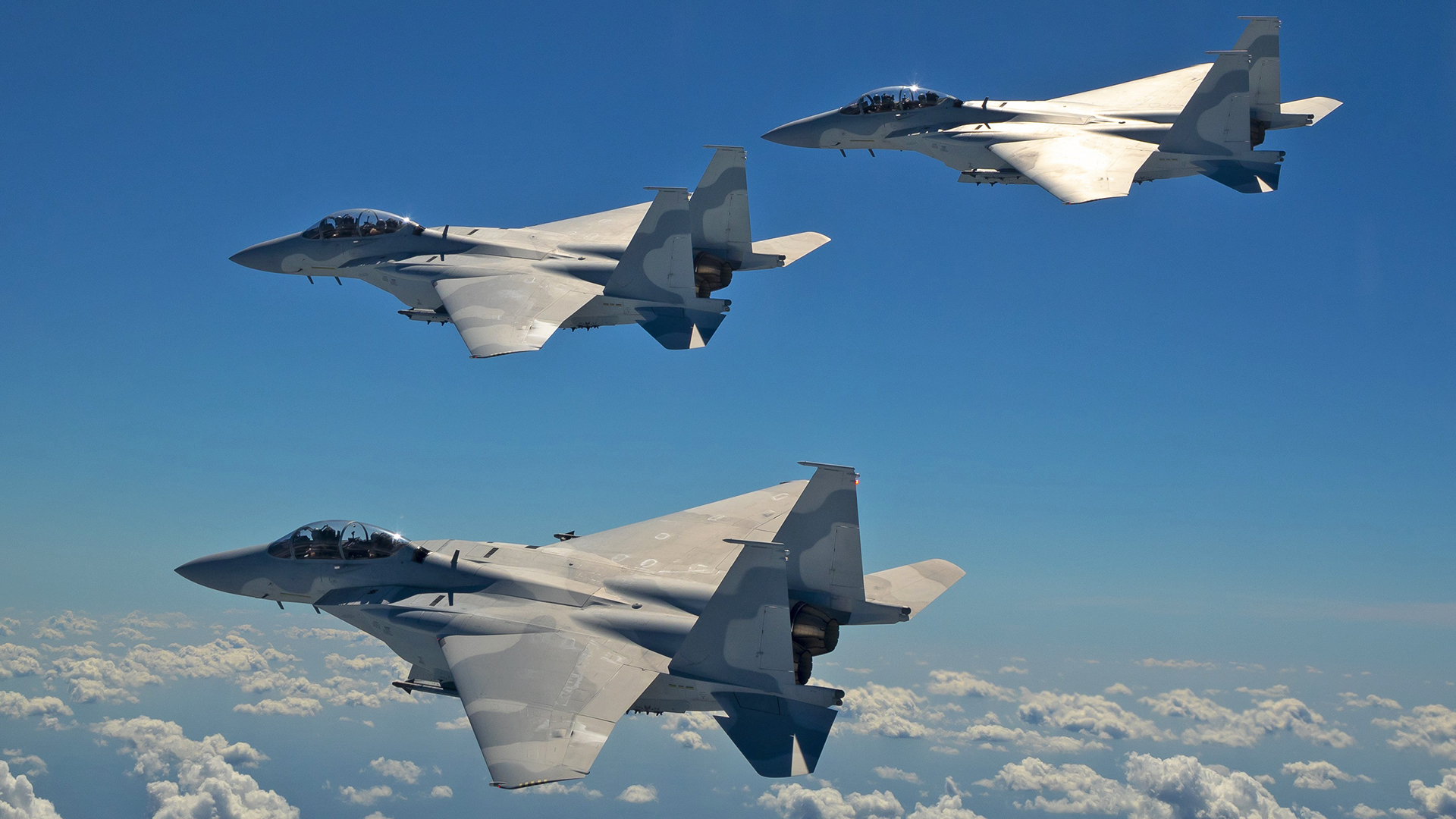
“As we look across the globe, every single operator flying the F-15 today wants more of that capability, either from new-build jets or from upgrades, like an EX-lite with those types of capabilities brought forward into their platforms. We’re in great conversations with our Korean friends regarding a big modification for their F-15Ks.” The Republic of Korea Air Force is looking to retrofit its F-15Ks with the AN/APG-82 radar, the Eagle Passive Active Warning Survivability System (EPAWSS), and the large area display cockpit.
“Japan is on contract now for the F-15J Super Interceptor upgrade. They have taken exceptional care of their aircraft and they have a lot of life left on their platforms.” The Japanese upgrade for its F-15Js also includes the addition of the APG-82. You can read more about this upgrade here.
“We get a lot of customers that are interested in nationally unique weapon systems that we help integrate with them. It’s one of our great selling points that we work so closely with our customers and offer them their own national sovereignty as well, whether that’s in software development or in weapons integration.”
“Poland has expressed interest in a heavyweight fighter to complement its F-16s and F-35s, and they are looking at 32 airplanes for two fighter squadrons. Indonesia is an exciting new market and we’re exploring an opportunity of potentially 24 jets.” Indonesia signed a Memorandum Of Understanding in August 2023 for the F-15EX. Israel is another potential F-15EX customer with a requirement for as many as 50 aircraft. These would be built to a bespoke standard, however, the deal is subject to current political sensitivities, which you can read more about here.
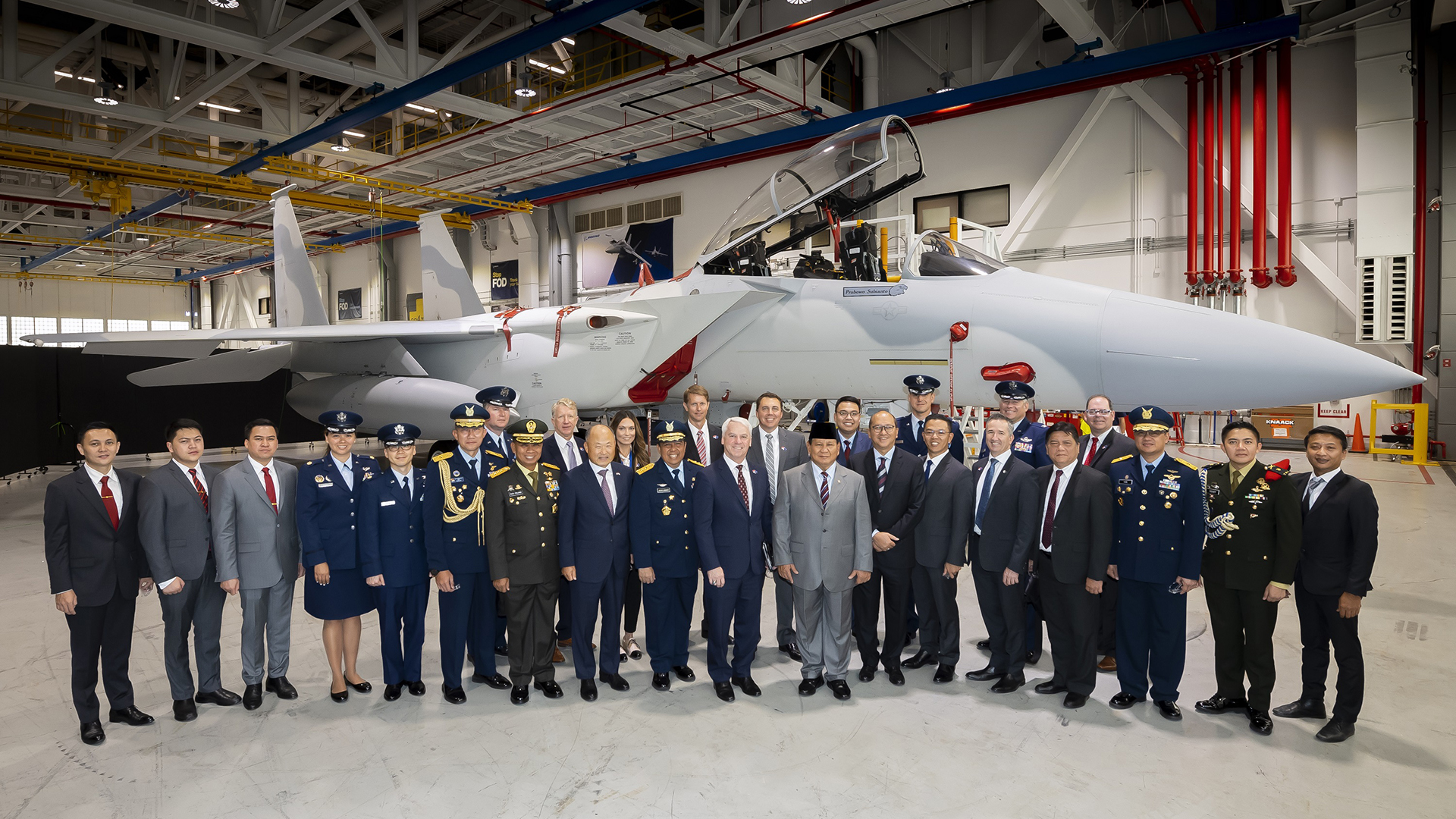
Saudi Arabia could be a returning Advanced F-15 customer, as it has a pressing requirement to recapitalize both its Panavia Tornado and F-15C/D fleets. Having ordered 84 F-15SAs, it is also upgrading its existing F-15S Strike Eagles to the same standard. Additional Advanced F-15s, possibly based on the F-15EX, could provide a solution to replacing its old F-15C/Ds, as well as the strike-attack Tornados.
Future roles
With much talk and budget allocation around Collaborative Combat Aircraft (CCAs) and artificial iIntelligence pilots, crewed fighter aircraft are likely to be employed in dramatically changing operational circumstances over the coming years. In future wars, fighter aircraft may be required to hold targets at risk at great ranges, coordinating and communicating with huge packages of both crewed and uncrewed assets.
“I could really see the F-15EX being an armed, forward, command and control platform, working with either manned or unmanned fighters, working with our holistic air forces across that portfolio,” says Novotny. “I think a WiFi hotspot in the midst of this highly contested environment, where we were able to communicate, produce data, and share information across nodes.”
“When it comes to the F-15EX, we are looking into the art of what’s possible. Maybe that is about turning the rear cockpit into a giant computer lab – ensuring we have the cooling, the power, and the space, to do so.”
“With the F-15EX, I can fight my way in, I can survive when I’m there, then I can create this hotspot of command and control capability through data links. I don’t see the backseat WSO in the traditional role using the laser designator pod [to guide] a GBU-12 bomb. This is more about the future long-range kill chain, and a collaborative command and control agent. On top of that, in the F-15EX I’m bringing the weapons I need to strike targets that are 2,000 miles away!”
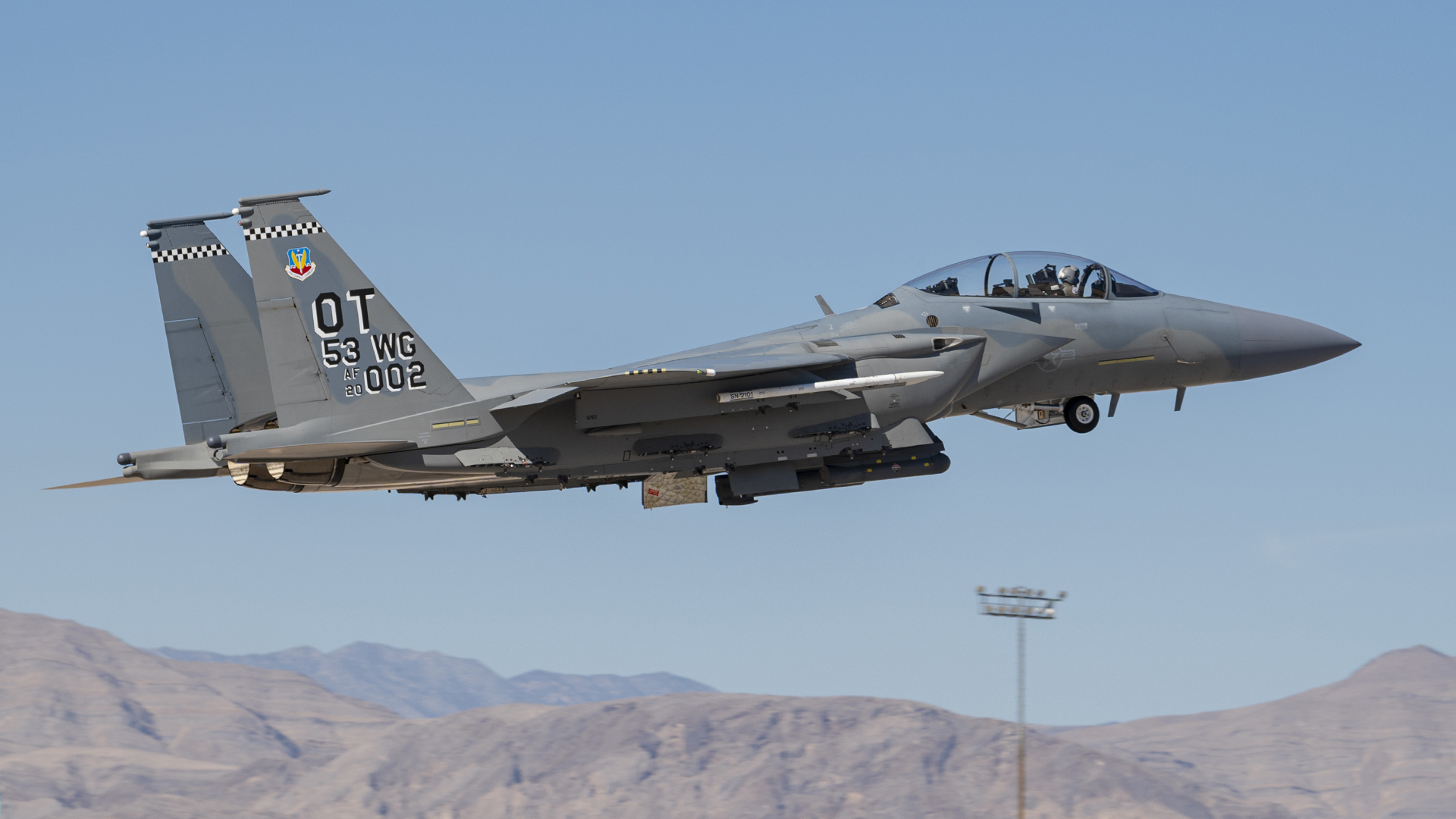
Boeing sees the F-15EX filling unique roles in the future USAF combat air forces. This could include the use of larger, long-range hypersonic missiles, as well as working as a command and control node for CCAs, for example. The ability for the two-seat F-15EX to be operated solely from the front seat does appear to offer a useful ability for a backseater to concentrate on complex and specialized mission sets, such as those explained above. In addition, the Advanced F-15’s EPAWSS electronic warfare system could act as a critical disruptive capability in future conflicts.
All told, Boeing says the F-15EX would be a powerful complement to low-observable crewed platforms and unmanned wingmen in the battlespace of the future. It also gives the USAF options and lowers force structure risk.
“As an American, as a former airman, I think it’s important to have multiple fighter lines going for our nation,” adds Rob Novotny. “It allows for competition, allows for development in that space. And it also keeps both of those developing industries honest with each other. So it helps drive price so that we can get the right capability to the warfighter at a reasonable price.”
Contact the editor: tyler@twz.com
